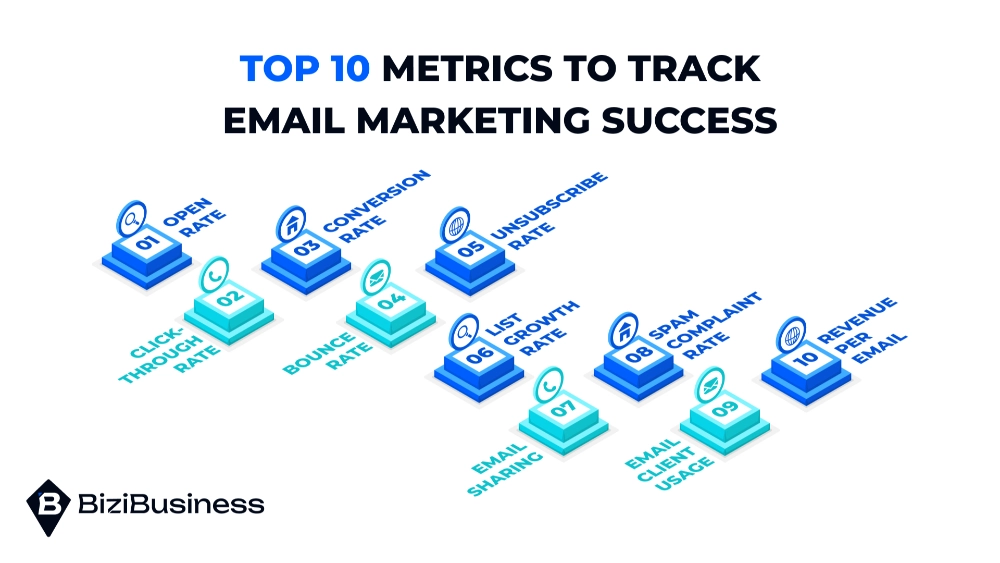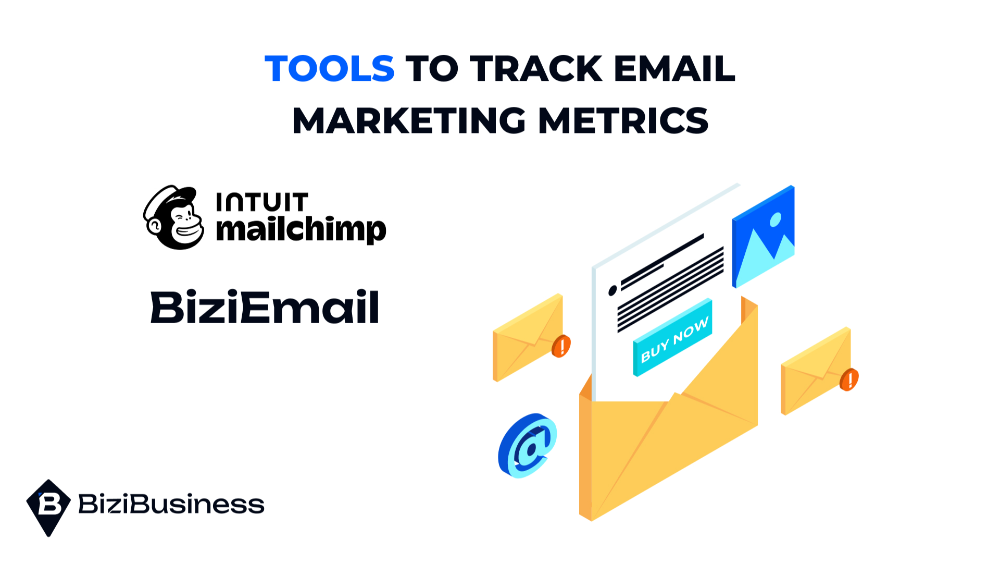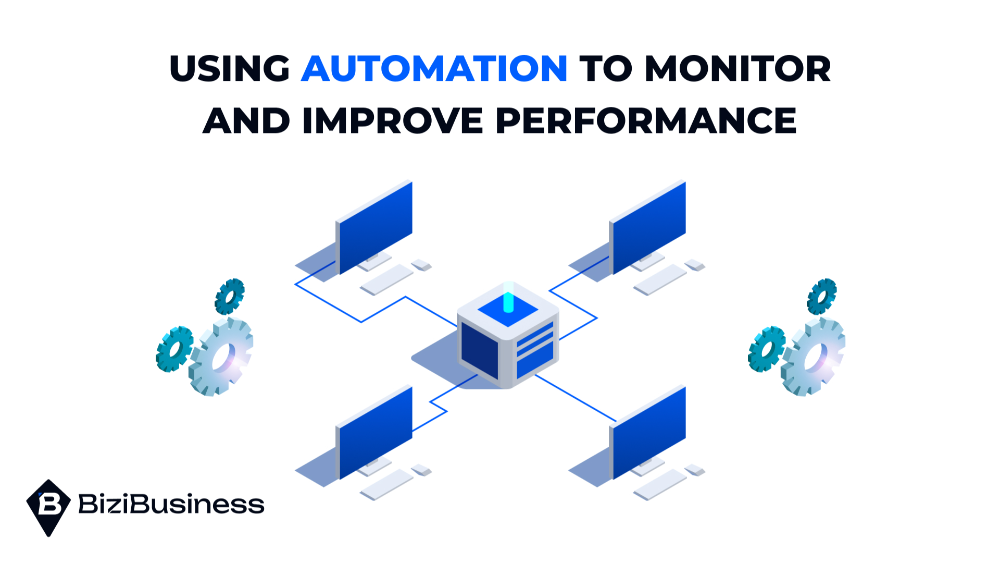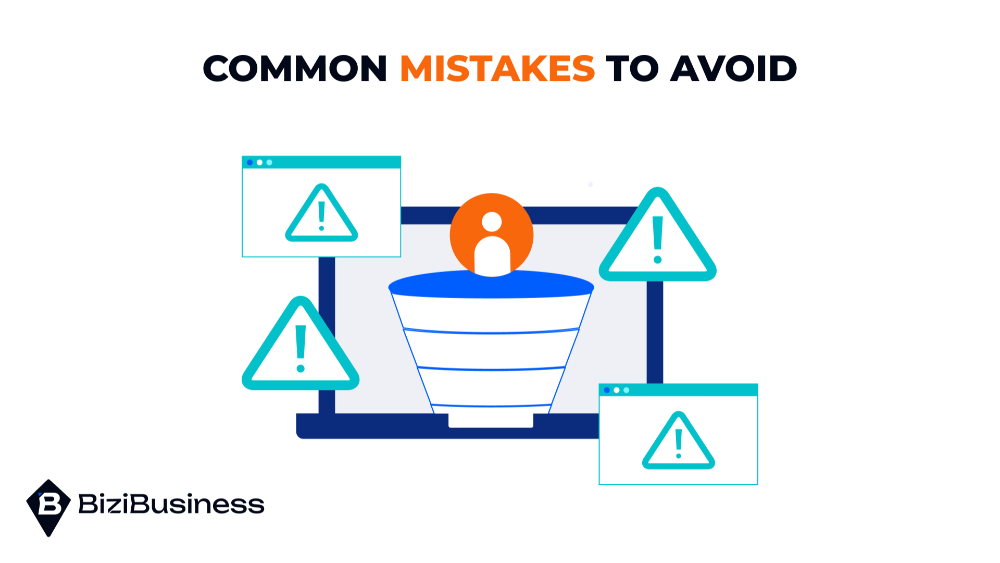Contents
Learn how to measure email marketing success with 10 key metrics that help you improve campaign performance and achieve better results.
Understanding how to measure email marketing success is crucial for maximizing ROI and fine-tuning your strategy. Without tracking the right data, you’re flying blind. Unsure of what’s working or what needs improvement. This guide covers 10 essential metrics that every marketer should monitor to gauge the effectiveness of their campaigns. From open rates to conversion rates, each metric offers insights that help you make informed, data-driven decisions. Whether you’re optimizing a single email or scaling a long-term strategy, these metrics will empower you to refine your efforts and drive stronger results with every send.
Why Measuring Email Marketing Success Matters
Tracking performance isn’t just a best practice—it’s essential. Understanding what information the marketer can learn from email marketing analytics empowers teams to optimize campaigns, improve deliverability, and increase conversions. With the right data, you can spot trends, identify what content resonates, and adjust your messaging accordingly.
If you’re wondering how to improve email marketing, the answer lies in consistent measurement. By analyzing open rates, click-through rates, and engagement behaviors, marketers gain the insight needed to test and refine campaigns.
This also ties into what is email marketing automation and how to automate email marketing. With tools that offer real-time analytics and automation workflows, you can streamline efforts and scale success.
Top 10 Metrics to Track Email Marketing Success
To fully understand how to measure email marketing success, marketers must go beyond basic open rates and dig into data that reflects subscriber behavior, list health, and return on investment. These 10 essential metrics are the backbone of any performance-driven strategy.

1. Open Rate
Open rate tracks how many recipients open your emails. It offers a first glimpse into your campaign’s effectiveness and speaks volumes about your subject line and timing.
- Why it matters: High open rates suggest strong subject lines and brand recognition. Low open rates may indicate poor timing or an unengaging preview.
- Industry benchmarks: Average open rates range from 20% to 25%, but this varies by industry.
2. Click-Through Rate (CTR)
CTR measures the percentage of recipients who clicked a link in your email. It’s one of the best indicators of content relevance and CTA effectiveness.
- Why it matters: A high CTR means your content and calls to action resonate with your audience.
- Improve it with: Strong CTAs, personalized content, and visually clean layouts.
3. Conversion Rate
Conversion rate shows how many recipients took the desired action after clicking—like making a purchase or signing up for a webinar.
- Why it matters: It reflects your campaign’s actual ROI.
- How to improve: Align email content with landing page goals and simplify the user journey.
4. Bounce Rate (Hard vs. Soft)
This metric tracks undeliverable emails.
- Hard bounces: Permanent failures (e.g., invalid address) should be removed immediately.
- Soft bounces: Temporary issues (e.g., full inbox, server error) monitor and retry a few times.
- Why it matters: A high bounce rate can damage your sender reputation and lower deliverability.
5. Unsubscribe Rate
This tracks the number of recipients who opt out after receiving an email.
- Why it matters: A high rate can indicate poor content relevance, frequency fatigue, or lack of value.
- Improve it by: Delivering targeted content and offering frequency preferences.
6. List Growth Rate
This shows the net change in your subscriber base.
- Formula: (New Subscribers – Unsubscribes) ÷ Total Subscribers × 100
- Why it matters: Positive growth reflects a healthy, growing audience.
- Boost it with: Lead magnets, website forms, and social promotions.
7. Email Sharing/Forwarding Rate
This metric tracks how often recipients share your email with others.
- Why it matters: High share rates indicate compelling, valuable content that users want others to see.
- Improve it by: Including a “Share” or “Forward” button and offering incentives for referrals.
8. Spam Complaint Rate
This measures how many recipients report your emails as spam.
- Why it matters: High complaint rates hurt your sender score and risk your emails being filtered out or blacklisted.
- Keep it low: Use confirmed opt-ins, avoid misleading subject lines, and honor unsubscribe requests promptly.
9. Device and Email Client Usage
Knowing where and how users read your emails lets you tailor the design accordingly.
- Why it matters: Most emails are opened on mobile devices, so responsive design is critical.
- Improve it by: Testing across email clients (Gmail, Outlook) and optimizing CTAs for thumb-friendly placement.
10. Revenue Per Email (RPE)
RPE shows the total revenue generated per email sent, especially critical for eCommerce brands.
- Why it matters: It directly connects campaign performance to sales outcomes.
- Improve it by: Targeted product recommendations, personalized discounts, and dynamic content.
Tools to Track Email Marketing Metrics

To truly master how to measure email marketing success, having the right tools in place is essential. Most email marketing platforms offer built-in analytics to help you track performance in real time and make data-driven improvements.
- Mailchimp: Known for its intuitive dashboard, Mailchimp allows users to track open rates, click rates, bounce rates, conversions, and more. It also includes predictive insights and benchmarks to evaluate performance over time.
- BiziEmail Services: BiziEmail offers robust analytics with real-time data, automation features, and integration options, making it easier to track metrics like list growth, RPE, and device usage.
These tools not only provide visibility but also support optimization, automation, and segmentation… all critical to how to improve email marketing and scale your efforts efficiently.
Using Automation to Monitor and Improve Performance
Automation plays a vital role in scaling your email campaigns while maintaining relevance and precision. But what is email marketing automation exactly? It’s the use of software to send emails based on user behavior, preferences, or specific triggers—saving time while enhancing engagement.

What is Automation in Email Marketing?
Automation in email marketing refers to workflows that trigger actions—like sending a welcome email when someone subscribes, or a reminder when a user abandons their cart. It allows you to build systems that respond in real-time without manual effort.
How to Automate Email Marketing
To automate email marketing, you’ll need a platform like Mailchimp, ActiveCampaign, or BiziEmail that supports workflow creation and behavior tracking. Here’s how to get started:
- Define goals (e.g., increase conversions, reduce churn).
- Set triggers (e.g., form submission, product view, inactivity).
- Create sequences (welcome series, re-engagement emails, upsell offers).
- Measure and refine workflows based on real-time analytics.
Examples of Automation in Action
- Open Rate Trigger: If a user doesn’t open an email, automatically resend with a new subject line.
- Click Behavior: If a subscriber clicks on a product link, trigger a follow-up email with similar recommendations.
- Conversion-Based Segmentation: Automatically move users into a “loyal customer” segment after a purchase and tailor future content accordingly.
These examples show how to improve email marketing by reacting to data automatically, maximizing performance, and keeping your messages timely and relevant.
Common Mistakes to Avoid
Even when you understand how to measure email marketing success, it’s easy to fall into habits that limit your insight. Avoiding these common pitfalls ensures your data-driven strategy delivers long-term results.

Relying on One Metric
While open rate is a useful indicator, it doesn’t tell the full story. High opens without clicks or conversions can give a false sense of success. Always assess multiple metrics: CTR, conversion rate, bounce rate… for a complete performance picture.
Ignoring Metrics Over Time
One-off metrics provide only snapshots. Success in email marketing comes from recognizing patterns and trends over time. Look for sustained improvements or declines in engagement to make smarter, long-term decisions. Consistent monitoring helps identify what works and what needs change.
Optimizing With Confidence
Mastering how to measure email marketing success is essential for building high-performing campaigns that evolve with your audience. By tracking key metrics—from open rates to revenue per email—you gain the insight needed to optimize content, improve automation workflows, and drive real results.
Don’t rely on guesswork. Let data guide your decisions and refine your strategy continuously. Whether you’re new to email marketing or fine-tuning an advanced campaign, consistent measurement is your path to sustained success.
Have questions or need help improving your results? Contact Us to learn more about how we can support your email marketing growth.




